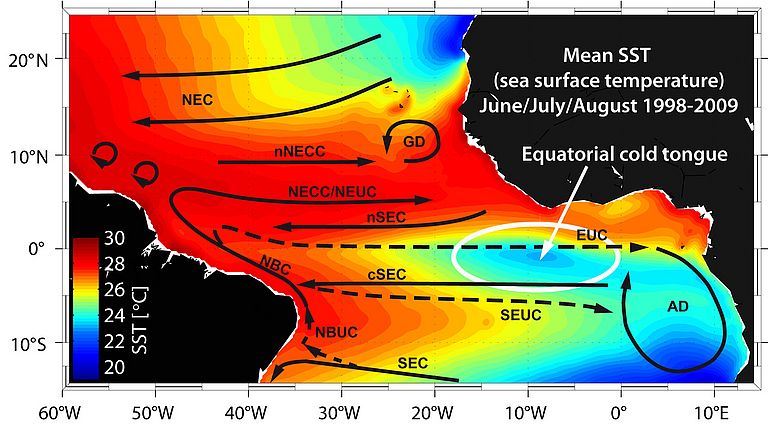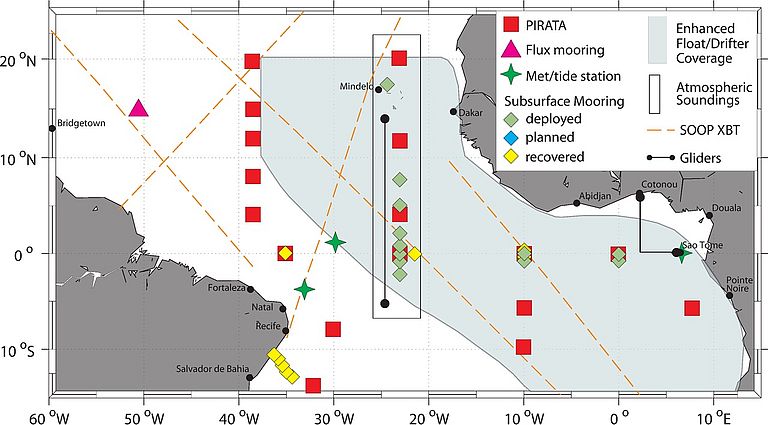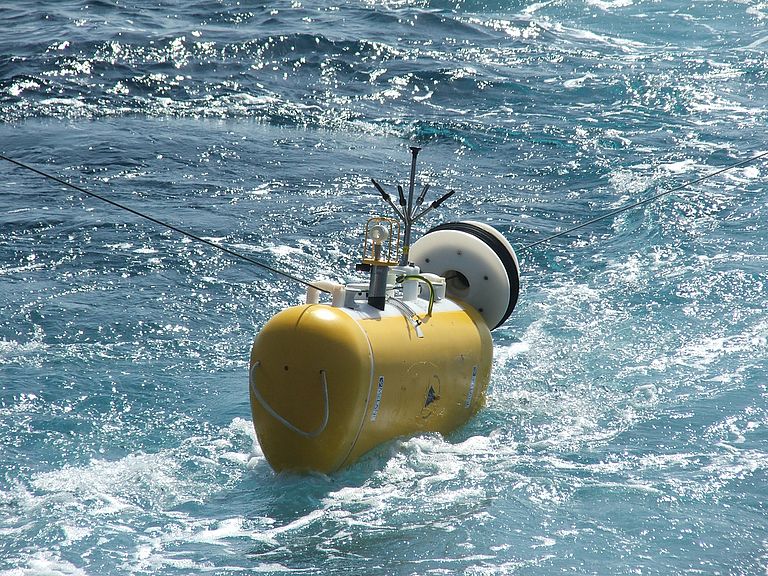The Long Reach of the Deep Sea
Oceanographers from Kiel document the effect of equatorial deep currents on West African rainfall
Precipitation associated with the West African Monsoon is of major significance to agriculture, water resources and health concerns in one of the more densely populated regions in Africa. The timing and amount of rainfall each year in the countries along the northern coast of the Gulf of Guinea are determined in part by the sea surface temperature of the tropical Atlantic. The details of this interaction between the ocean and the atmosphere are not fully understood at this time. Previously it was thought that effects from the Pacific and North Atlantic were the main source for climate fluctuations in the equatorial Atlantic. Oceanographers from the Leibniz Institute of Marine Sciences in Kiel (IFM-GEOMAR), in collaboration with their colleagues from the USA, were now able to demonstrate the existence of regular interannual temperature fluctuations which have an effect on the rainfall of the region but cannot be traced back to the previously known sources. Even more astonishing for the scientists is the fact that all measurements indicate that these fluctuations are caused by deep currents of the equatorial Atlantic itself. “To date, when trying to explain tropical climate variations, we have always looked upwards, specifically to the atmosphere. Our new data, for the first time, direct our attention towards the depths of the ocean, thereby opening new perspectives for our scientific approach,” explained Dr Peter Brandt, professor at IFM-GEOMAR. He is the lead author of the study which describes the new findings for the Atlantic and which are published in the current issue of “Nature”.
In a large-scale, international research programme, the Tropical Atlantic Climate Experiment (TACE), experts have attempted for years to track the causes, effects and potential periodicities of climate fluctuations in the tropical Atlantic. The German contribution to this programme, supported by the Federal Ministry of Education and Research (“North Atlantic” project) and the German Science Foundation as part of the Kiel Special Research Project SFB754 “Climate - Biogeochemical Interactions of the Tropical Oceans” also includes deep-sea moorings along the equator. These moorings consist of several km of mooring wire held upright in the water column by flotation and buoys. Instruments are mounted along the wire to continuously record current speed and direction, salinity and temperature, thereby allowing the observation of long-term changes of parameters in the deep ocean. Furthermore, the scientists obtain current data from freely drifting deep-sea buoys, so-called Argo floats, and also information on the sea surface itself and the atmosphere from various satellite-based sensors. “The time series obtained over the past ten to twenty years have revealed previously unknown fluctuations of currents and temperatures at the surface of the tropical Atlantic which have a regular cycle of 54 months, or 4 ½ years,” explained Peter Brandt. The scientists were able to document similar fluctuations of the “Deep Jets”, deep currents down to 3000 m with speeds of 10-20 cm/sec. They flow along the equator, crossing the entire Atlantic, with flow reversals every few hundred meters. “These jets are generated in the deep ocean, and their energy apparently propagates upwards through the water column. Once near the surface, this energy affects currents and temperatures,” stated Dr Brandt.
On the other hand, sea surface temperatures are among the deciding factors for rainfall fluctuations over West Africa. “How large the effect of these deep jets is, and how they are generated is still somewhat of a mystery,” said Dr Brandt, “we still have a lot of work ahead of us.” The next research cruise for this project is taking place right now aboard the German research vessel MARIA S. MERIAN. As Dr Brandt explained, “We are going to retrieve and redeploy our moorings along the equator, and we hope that the new data will provide new insight into the processes of the deep sea, thereby also contributing to an improved climate prediction for West Africa.”
Original publication:
Brandt, P., A. Funk, V. Hormann, M. Dengler, R. J.Greatbatch, J. M. Toole: Interannual atmospheric variability forced by the deep equatorial Atlantic Ocean, 2011, Nature Advance Online Publication, doi: 10.1038/nature10013:
Contact:
Jan Steffen (Communication & Media), Phone: +49-431 600 2811, presse(at)geomar.de





